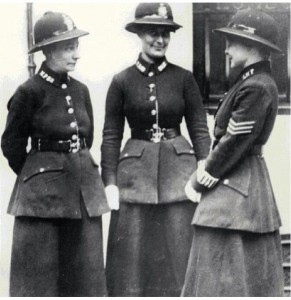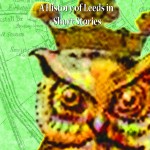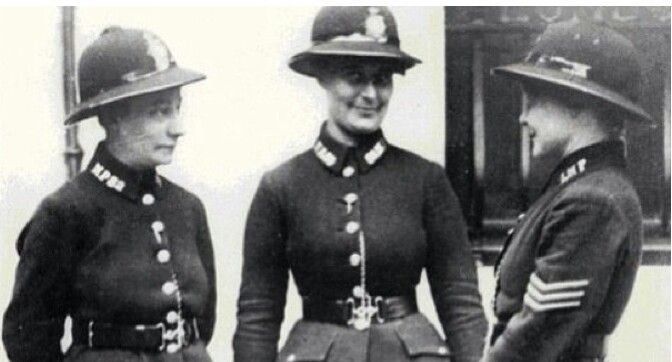In our monthly instalment of Leeds history, Chris Nickson tells us how women in Leeds first came to join the police force.
Women police constables. WPC. It’s an archaic term now, of course; everyone who serves is simply a police officer.
But the history of women in the police in Leeds is a little chequered, and doesn’t stretch back that far – only to December 1914. The First World War was on by then, of course, with thousands of men volunteering to fight, including many from the police. They were replaced in duties by the ‘Specials,’ who were often those who failed medicals for the army for one reason or another.
Although the war was barely underway, the authorities in Leeds were concerned by the number of women and girls involved in criminal offences, so the National Council of Women began Voluntary Women’s Patrols, initially around Chapeltown Road, Woodhouse Moor, and near Headingley Football ground, expanding to Briggate and the area around the markets.
It obviously worked well. In 1916, the Chief Constable, William B. Lindley, said: ‘While deploring the total of juvenile crime, it is highly satisfactory to be able to note that only six per cent of the juveniles brought before the court during the 12 months were females, and I am firmly of the opinion that the world of the Women’s Patrols in Leeds has in a large measure been responsible for the figures being kept so low.
‘The object of the Patrols is to define and assist in promoting a higher moral code among girls, and so to guide and encourage them that they will have every hope of becoming self-respecting citizens.
‘Carried out with tact and discretion, a duty of this kind can undoubtedly be performed with far better effect by the Women’s Patrols than by members of the Police Force.’
The women weren’t constables. They inhabited a grey area but stayed active for the duration of the war. Their success led the National Union of Women Workers to campaign for women to become regular police officers.
That finally happened in 1918. The Watch Committee agreed in September to the appointment of one woman at £100 a year and uniform. Out of 44 applicants, Mrs. Florence E. Parrish was chosen. She’d been the chief officer of Voluntary Patrols. In her new position she had exactly the same powers as a male constable.
Two years later a second policewoman, Miss Brown, was hired after being trained at the Women’s Police Service School in London.

Leeds women police would have been similarly dressed. Found on myvintagelondon.tumblr.com
And then things became strange. A few months after the second appointment Policewoman Parrish resigned, in September 1921. In July 1922 Policewoman Brown resigned, leaving Leeds with no WPCs, and the Watch Committee decided not to hire any replacements. Why had they both gone in such a short time? That remains a mystery.
It was apparent, though, that Leeds needed policewomen, and in October 1922 Mrs Strickland was appointed as a ‘female enquiry’ officer, becoming a regular policewoman in 1923, the predecessor of many to wear the uniform, although her duties were strictly limited. She was involved with offences committed against women and girls, and dealing with destitute or missing women, girls, and children.
It was a start, albeit a rocky one and female police officers in Leeds had a long way to go before they were assigned full duties.
 Chris Nickson’s latest books are Leeds, The Biography: A History of Leeds in Short Stories, published by Armley Press and Two Bronze Pennies, the second in his series of crime novels set in Leeds in the 1890s.
Chris Nickson’s latest books are Leeds, The Biography: A History of Leeds in Short Stories, published by Armley Press and Two Bronze Pennies, the second in his series of crime novels set in Leeds in the 1890s.
‘Somehow the idea of 1920s Leeds has got under my skin lately, and the first policewomen we had here. so I began writing. Here’s a little bit of it, wherever it ends up going.’ You can read Chris’s blog here.


